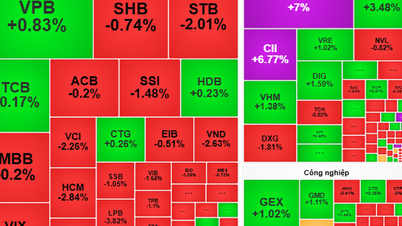
Ways to calculate special consumption tax on alcohol and beer
The Government is urgently completing the Draft Amendment to the Law on Special Consumption Tax to submit to the National Assembly for approval at the next session. One of the main contents of this draft law is whether (or not?) to change the method of calculating special consumption tax on alcohol and beer.
According to international practice, special consumption tax can be levied using three methods: relative tax calculation method (Ad valorem tax); absolute tax calculation method (Specifix tax), mixed tax calculation method (Hybrid tax).
The relative tax calculation method is considered quite simple in tax management and supervision; it is usually used for groups of goods and services with many different customer segments, with high price differentiation (the price difference between segments is quite large). This method is based on the selling price, so the selling price of the product and tax revenue include price fluctuations in the economy . Therefore, budget balance is also more secure in periods for this source of revenue.
In contrast, the absolute tax method is often applied to groups of goods and services with prices that are not too different between suppliers. This method does not depend on the selling price but on the unit of consumption and allows the Government to better predict tax revenue.
However, the disadvantage of the absolute tax calculation method is that it cannot keep up with price fluctuations in the economy. Therefore, this method is often applied in countries with low inflation, little volatility or fluctuations within a narrow range.

For the mixed tax calculation method (both relative and absolute), this policy has many advantages when combining the two methods together, but the important point is that the tax policy is now quite complicated, creating more administrative burdens. The impact is more complicated on both the supply side and the consumer demand side. Therefore, when implementing this method, it is necessary to evaluate very carefully.
Because when not analyzed and evaluated carefully, the proposed tax policy can completely bring about negative side effects.
Experience in reforming tax systems around the world also shows that the Government needs to be very cautious in the process of building and promulgating special consumption tax policies; absolutely must not rush to suddenly change policies.
The policy must ensure fair competition among existing businesses. Any changes need to be studied and their impacts carefully and scientifically assessed, in which careful study of the elasticity of demand is extremely urgent.
Failure to carefully study the elasticity of demand can deviate from the policy objective (reducing consumption and increasing revenue) because excessive tax increases can lead to reduced revenue (resulting in reduced budget revenue) and consumers looking for alternative solutions (such as buying from smuggled and unofficial channels). More importantly, the reform roadmap needs to be announced and regulated in advance so that businesses can adjust and adapt to the new policy.
Which option is right?
One year ago, the Party Central Committee issued Resolution No. 27-NQ/TW on continuing to build and perfect the Socialist Republic of Vietnam's rule of law state in the new period. It provided directions for building a legal system that is democratic, fair, humane, complete, timely, synchronous, unified, public, transparent, stable, feasible, accessible, capable of regulating social relations, taking the legitimate and legal rights and interests of people, organizations, and enterprises as the center, promoting innovation.
In that spirit, based on the principles set forth above, first of all, the State needs to research, develop and publicly and clearly announce a roadmap for reforming the special consumption tax policy on alcoholic beverages so that businesses providing goods and services can develop appropriate investment, production and business orientations.
This will also help stakeholders (Government, suppliers, consumers and farmers/raw material suppliers) to avoid sudden, negative impacts.
In the short and medium term (3 years), the State should maintain the current tax calculation method and increase the excise tax rate to achieve the goal of increasing the selling price of alcohol by at least 10% as recommended by WHO.
After this period, it is possible to switch to applying a mixed tax calculation method with a reasonable structure (initially applying a low absolute tax rate, and adjusting it according to the roadmap) or build a roadmap to completely switch to a multi-level absolute tax calculation method and have a roadmap to gradually narrow the tax rates for different segments.
Finally, but very importantly, any policy adjustment (especially changes in tax calculation methods) needs to be carefully studied, with detailed, scientific and clear impact assessment on relevant parties; until that is done, let's not discuss adjusting tax calculation methods.
Source


![[Photo] Panorama of the Opening Ceremony of the 43rd Nhan Dan Newspaper National Table Tennis Championship](https://vphoto.vietnam.vn/thumb/1200x675/vietnam/resource/IMAGE/2025/5/19/5e22950340b941309280448198bcf1d9)
![[Photo] Close-up of Tang Long Bridge, Thu Duc City after repairing rutting](https://vphoto.vietnam.vn/thumb/1200x675/vietnam/resource/IMAGE/2025/5/19/086736d9d11f43198f5bd8d78df9bd41)

![[Photo] General Secretary To Lam attends the conference to review 10 years of implementing Directive No. 05 of the Politburo and evaluate the results of implementing Regulation No. 09 of the Central Public Security Party Committee.](https://vphoto.vietnam.vn/thumb/1200x675/vietnam/resource/IMAGE/2025/5/19/2f44458c655a4403acd7929dbbfa5039)
![[Photo] President Luong Cuong presents the 40-year Party membership badge to Chief of the Office of the President Le Khanh Hai](https://vphoto.vietnam.vn/thumb/1200x675/vietnam/resource/IMAGE/2025/5/19/a22bc55dd7bf4a2ab7e3958d32282c15)































![[Photo] Prime Minister Pham Minh Chinh inspects the progress of the National Exhibition and Fair Center project](https://vphoto.vietnam.vn/thumb/1200x675/vietnam/resource/IMAGE/2025/5/19/35189ac8807140d897ad2b7d2583fbae)

























































![[VIDEO] - Enhancing the value of Quang Nam OCOP products through trade connections](https://vphoto.vietnam.vn/thumb/402x226/vietnam/resource/IMAGE/2025/5/17/5be5b5fff1f14914986fad159097a677)





Comment (0)